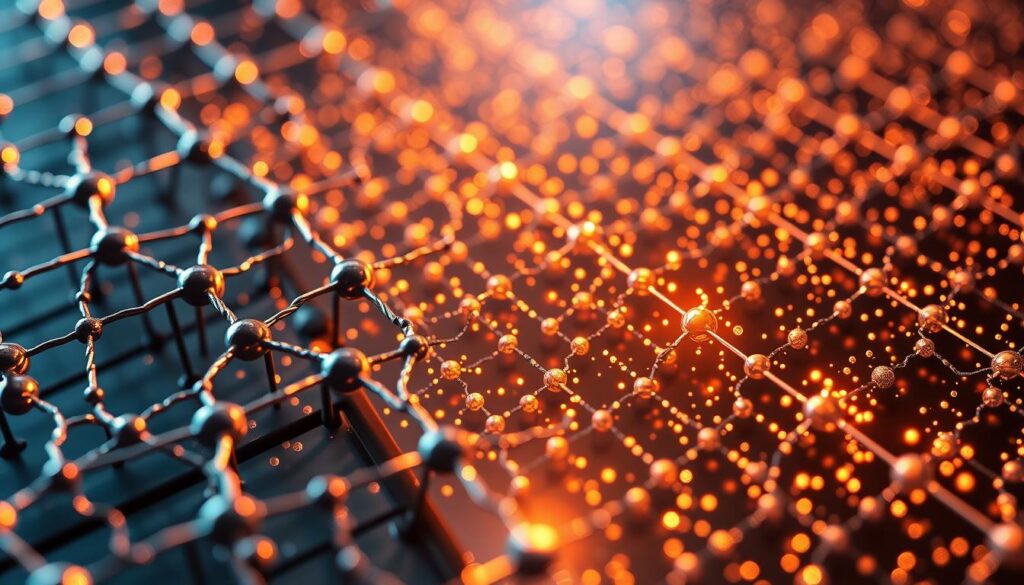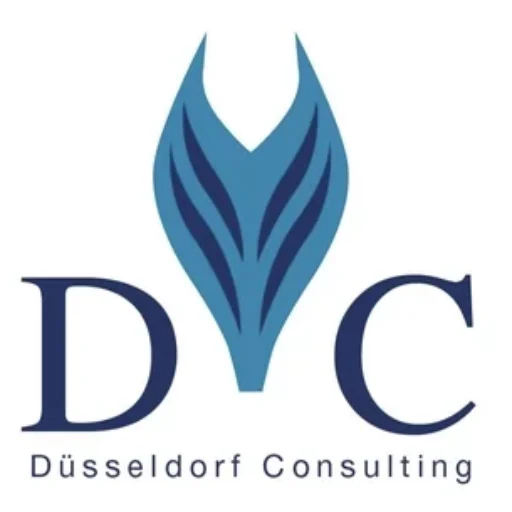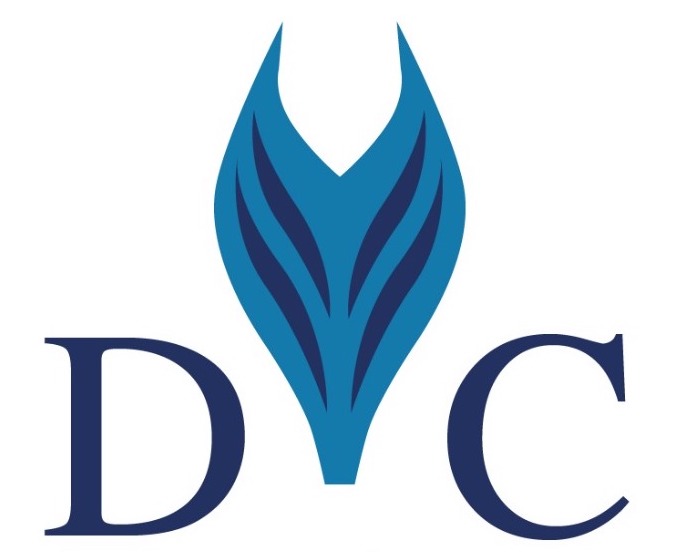As the world shifts towards sustainable technology, solar energy has become a vital component in the quest for renewable energy sources. Germany, at the forefront of this transition, has seen significant advancements in photovoltaic cell technology. Recently, researchers at Martin Luther University Halle-Wittenberg (MLU) have made a groundbreaking discovery that could increase the efficiency of solar cells.
This breakthrough, as reported, highlights the potential for enhanced solar energy harvesting, aligning with the philosophy of “ACTA NON VERBA” (Deeds, not words), a mantra that resonates with innovative companies like Düsseldorf Consulting GmbH. The progress in photovoltaic technology is a crucial step towards a more sustainable future.
Key Takeaways
- Researchers at MLU have discovered a new method to boost solar cell efficiency.
- The breakthrough is a significant step towards more sustainable energy solutions.
- Germany remains at the forefront of solar energy innovation.
- The advancement aligns with the global shift towards renewable energy sources.
- Solar energy technology is becoming increasingly efficient.
Introduction to Photovoltaic Technology
As the world grapples with climate change, solar energy emerges as a critical component of the renewable energy mix. The photovoltaic industry is experiencing rapid growth, driven by advancements in technology and increasing demand for renewable energy sources.
Importance of Solar Energy
Solar energy is one of the fastest-growing sources of renewable energy, with the demand for solar panels expected to increase dramatically in the coming years. The importance of solar energy lies in its potential to reduce our reliance on fossil fuels, thereby decreasing carbon emissions and mitigating climate change.
- Reduces carbon footprint
- Promotes energy independence
- Supports sustainable development
For more insights on the strategic benefits and market information related to solar energy in Germany, you can visit Duscons.
Overview of Photovoltaic Cells
Photovoltaic cells, or solar cells, are the building blocks of solar panels. They convert sunlight directly into electricity through a process known as photovoltaics. The efficiency of these cells is crucial for the overall performance of solar panels.
The basic structure of a photovoltaic cell includes several layers, each with a specific function. The most common material used in photovoltaic cells is silicon, due to its semiconductor properties and abundance.
Role of Materials in Efficiency
The solar cell efficiency is significantly influenced by the materials used in photovoltaic cells. Researchers are continually exploring new materials and technologies to enhance efficiency and reduce production costs. Some of the key factors affecting efficiency include:
- Material purity
- Layer thickness
- Surface texture
Advancements in photovoltaic research are crucial for improving the efficiency and sustainability of solar energy systems. By developing more efficient and cost-effective materials, the photovoltaic industry can continue to grow and contribute to a more sustainable energy future.
Overview of Next-Generation Materials
Next-generation materials are setting a new standard in the efficiency and sustainability of solar cells. These materials are crucial in advancing photovoltaic technology, enabling the production of more efficient and durable solar cells.
Definition of Next-Generation Materials
Next-generation materials in the photovoltaic industry refer to innovative materials that offer improved efficiency, durability, and sustainability compared to traditional materials. These include perovskites, organic photovoltaic materials, and nanomaterials. Oxford PV, for instance, is already producing commercial solar cells using perovskites, a cheap and abundant photovoltaic material.
Comparison with Traditional Materials
Traditional photovoltaic materials, such as silicon, have been the backbone of the solar industry. However, next-generation materials are emerging as viable alternatives, offering several advantages. Perovskites, for example, have shown higher power conversion efficiency and lower production costs compared to traditional silicon-based solar cells.
Durability and Sustainability
The durability and sustainability of next-generation materials are critical factors driving their adoption in the Germany solar industry. These materials not only promise to enhance the efficiency of solar cells but also to reduce environmental impact. Their ability to be produced using abundant resources and with less energy-intensive processes makes them an attractive option for future photovoltaic technology.
As the advanced photovoltaic technology continues to evolve, the role of next-generation materials will become increasingly significant. Their potential to transform the solar industry is vast, offering a more sustainable and efficient energy solution for the future.
Innovations in Perovskite Materials
Innovations in perovskite materials are at the forefront of advancements in solar cell technology, offering improved efficiency and potential cost savings. Perovskite materials have shown significant promise in enhancing the performance of solar cells, primarily due to their unique properties.
Benefits of Perovskite in Solar Cells
Perovskite materials offer several benefits when used in solar cells, including higher power conversion efficiency and the potential for lower production costs. The ability of perovskite materials to absorb a wide range of solar energy makes them particularly effective in converting sunlight into electricity.
According to a recent study, perovskite solar cells have achieved efficiencies of over 25%, rivaling traditional silicon-based solar cells.
“The future of solar energy lies in the development of materials like perovskite, which can offer higher efficiencies at lower costs,”
said a leading researcher in the field.
Challenges of Perovskite Development
Despite the promising benefits, there are several challenges associated with the development of perovskite materials for solar cells. One of the primary concerns is the stability and durability of perovskite materials under various environmental conditions.
- Moisture sensitivity
- Thermal instability
- Scalability issues
Addressing these challenges is crucial for the widespread adoption of perovskite solar cells. Researchers are actively exploring solutions, including the development of new perovskite compositions and more effective encapsulation methods.
Leading Research Institutions in Germany
Germany is home to several leading research institutions that are at the forefront of perovskite material research. These institutions are playing a crucial role in advancing the technology and overcoming the challenges associated with perovskite solar cells.
| Institution | Research Focus |
|---|---|
| Helmholtz-Zentrum Berlin | Perovskite stability and scalability |
| University of Stuttgart | Perovskite material synthesis and characterization |
| Fraunhofer Institute for Solar Energy Systems | Perovskite solar cell integration and testing |
The ongoing research in perovskite materials is expected to drive significant advancements in solar cell technology, contributing to the growth of the renewable energy sector in Germany and beyond.

Role of Silicon in Photovoltaic Advancements
Silicon’s pivotal role in the photovoltaic industry is underscored by continuous innovations aimed at boosting its performance and sustainability. As the backbone of solar technology, silicon continues to drive advancements in photovoltaic cells, enhancing their efficiency and reducing production costs.
Enhancements in Silicon Technology
Recent developments in silicon technology have focused on improving its purity and reducing defects, thereby increasing the overall efficiency of photovoltaic cells. Advanced manufacturing techniques have enabled the production of high-quality silicon wafers at lower costs, making solar energy more competitive with fossil fuels. According to recent studies, these advancements have contributed to a significant reduction in the cost of solar energy production https://pmc.ncbi.nlm.nih.gov/articles/PMC10934213/.
Hybrid Silicon-Perovskite Solutions
The integration of silicon with perovskite materials has emerged as a promising approach to further enhance photovoltaic efficiency. Hybrid silicon-perovskite solutions aim to combine the advantages of both materials, potentially leading to higher power conversion efficiencies and lower production costs. Research in this area is ongoing, with several institutions in Germany at the forefront of developing these innovative technologies.
The potential of hybrid silicon-perovskite solutions lies in their ability to overcome the limitations of traditional silicon-based photovoltaic cells. By leveraging the strengths of both materials, researchers aim to create more efficient and sustainable solar cells that can meet the growing demand for renewable energy.
Emerging Organic Photovoltaic Materials
As the world shifts towards renewable energy sources, organic photovoltaic materials are becoming increasingly important. These materials offer a promising alternative to traditional silicon-based photovoltaic cells, particularly in urban environments where space is limited.
Characteristics of Organic Materials
Organic photovoltaic materials are known for their flexibility, lightweight, and potential for low-cost production. They can be integrated into building facades, windows, and even clothing, making them highly versatile for urban applications. The use of organic materials also reduces the reliance on toxic substances used in some traditional solar cells, enhancing their sustainability.
The semiconducting properties of organic materials allow them to convert sunlight into electricity efficiently. Researchers are continually improving the efficiency and stability of these materials, making them more viable for commercial use.
Potential Applications in Urban Environments
Urban environments present a unique challenge for solar energy harvesting due to limited space and complex infrastructure. Organic photovoltaic materials can be applied in various innovative ways:
- Building-integrated photovoltaics (BIPV)
- Transparent solar windows
- Flexible solar panels for curved surfaces
These applications not only generate electricity but also contribute to the aesthetic and functional design of urban landscapes.
| Application | Benefits | Potential Impact |
|---|---|---|
| BIPV | Seamless integration into buildings | Enhanced energy efficiency |
| Transparent Solar Windows | Maintains visibility while generating power | Increased adoption in urban architecture |
| Flexible Solar Panels | Adaptable to various surfaces | Expanded use in consumer products and infrastructure |
The development and deployment of organic photovoltaic materials are poised to play a significant role in Germany’s renewable energy strategy, contributing to a more sustainable and energy-efficient future.
The Impact of Nanomaterials in Solar Cells
The integration of nanomaterials into solar cells is revolutionizing the field of photovoltaics. By leveraging the unique properties of materials at the nanoscale, researchers are developing innovative solutions to enhance solar cell efficiency.
Nanomaterials offer several advantages in the context of solar cells, including increased surface area, improved light absorption, and enhanced electrical conductivity. These benefits contribute to more efficient energy conversion and potentially lower production costs.
Types of Nanomaterials Used
Various types of nanomaterials are being explored for use in solar cells, including:
- Nanoparticles: Such as silicon or cadmium selenide nanoparticles, which can be used to create quantum dots.
- Nanowires: These are being used to improve charge transport and collection in solar cells.
- Nanostructured films: These films can enhance light trapping and absorption.
Nanoparticles, for instance, can be engineered to have specific optical properties, making them ideal for enhancing light absorption in solar cells. Quantum dots, a type of nanoparticle, can be tuned to absorb different wavelengths of light, potentially increasing the efficiency of solar cells.

Advantages of Nanomaterial Incorporation
The incorporation of nanomaterials into solar cells offers several key advantages:
- Enhanced Efficiency: By improving light absorption and charge transport, nanomaterials can significantly boost solar cell efficiency.
- Cost-Effectiveness: Nanomaterials can potentially reduce production costs by enabling the use of less material or simpler manufacturing processes.
- Flexibility and Versatility: Nanomaterials can be used to create flexible solar cells, opening up new possibilities for integration into various products.
As research continues to advance, the role of nanomaterials in solar cells is expected to become increasingly important, driving innovation and potentially leading to more widespread adoption of solar energy technologies.
Germany’s Leading Firms in Solar Technology
With its strong focus on renewable energy, Germany hosts a variety of leading solar technology firms that are driving innovation and sustainability. The country’s commitment to reducing carbon emissions has created a fertile ground for solar companies to thrive.
Profiling Düsseldorf Consulting GmbH
Düsseldorf Consulting GmbH, located at Königsallee 22, 40212 Düsseldorf, is a notable entity in Germany’s solar industry. Their motto, “ACTA NON VERBA,” reflects their commitment to action over words. As a consulting firm, they provide valuable services to businesses and organizations looking to navigate the complexities of solar technology and implementation.
The company’s expertise in the solar sector is recognized across the industry, making them a trusted partner for those seeking to invest in or expand their solar energy capabilities.
Other Key Players in the Market
Apart from Düsseldorf Consulting GmbH, there are several other key players in Germany’s solar technology market. These companies are involved in various aspects of the industry, from manufacturing and installation to research and development.
- Companies specializing in photovoltaic cell production.
- Firms offering solar panel installation services.
- Research institutions developing new solar technologies.
The presence of these diverse players underscores the vibrancy and competitiveness of Germany’s solar industry, positioning the country as a leader in the global transition to renewable energy.
Policy and Support for Solar Innovations
Solar energy in Germany is bolstered by a range of government initiatives and funding opportunities. The country’s commitment to renewable energy is not just a policy goal but a comprehensive strategy that includes supporting research and development in photovoltaic technology.
Government Initiatives
The German government has launched several initiatives aimed at promoting solar energy. These include programs to encourage the adoption of solar panels in residential areas and incentives for businesses to invest in solar technology. As noted by a recent report, “The Energiewende (Energy Transition) program is a key driver of Germany’s renewable energy landscape, providing a framework for the development and implementation of renewable energy sources.”
“The Energiewende program is crucial for promoting renewable energy in Germany, offering a structured approach to achieving energy transition goals.”
Funding Opportunities for Research
Research in photovoltaic technology is supported through various funding opportunities. The government provides grants and subsidies to research institutions and companies working on innovative solar technologies. For instance, the Federal Ministry for Economic Affairs and Climate Action (BMWK) offers funding for projects that aim to improve the efficiency and sustainability of solar cells. More information on these funding opportunities can be found on the Clean Energy Wire factsheet on solar power in Germany.
The support for solar innovations is not limited to financial incentives. The government also facilitates collaboration between industry stakeholders, research institutions, and policymakers to drive advancements in photovoltaic technology. This collaborative approach is essential for addressing the challenges associated with integrating solar energy into the national grid and ensuring the long-term sustainability of solar energy solutions.
By providing a conducive environment for research and development, Germany is positioning itself as a leader in the global solar energy market. The government’s proactive stance on supporting solar innovations is a testament to its commitment to reducing carbon emissions and achieving energy transition goals.
Future Outlook for Photovoltaic Materials in Germany
The photovoltaic industry in Germany is on the cusp of a new era, driven by advancements in materials science. As the country continues to invest in renewable energy, the demand for innovative and efficient photovoltaic materials is expected to rise.
Trends to Watch in the Industry
Several trends are anticipated to shape the future of photovoltaic materials in Germany. Increased Efficiency through new materials like perovskite and silicon-perovskite hybrids is a significant trend. Additionally, sustainability will play a crucial role, with a focus on recyclable and environmentally friendly materials.
The integration of nanomaterials and organic photovoltaic materials is also expected to gain traction, offering potential improvements in efficiency and cost-effectiveness.
Predictions for Market Growth
The Germany solar industry is poised for significant growth, driven by government initiatives and technological advancements. As policies supporting renewable energy continue to evolve, the market is expected to expand, creating new opportunities for businesses and investors.
With the global shift towards cleaner energy sources, Germany’s commitment to solar energy is likely to attract further investment in photovoltaic technology, driving market growth and innovation.
Conclusion: The Path Ahead for Solar Energy
Germany’s commitment to reducing greenhouse gas emissions is driving growth in the solar energy sector, with Düsseldorf reporting a 20% reduction in emissions over five years. Ongoing innovations in photovoltaic materials and technology are crucial to achieving renewable energy targets.
Key Findings and Future Outlook
The development of next-generation photovoltaic materials, such as perovskite and organic photovoltaic materials, is enhancing efficiency and sustainability. Germany’s “Energiewende” program is a key strategy for achieving renewable energy targets, and investments in research and development are driving innovation in clean technologies.
For more information on Germany’s green economy strategies, visit Düsseldorf Consulting GmbH’s guide on practical strategies for sustainable development.
Innovation and Sustainability
The future of solar energy in Germany looks promising, with ongoing innovations in photovoltaic materials and technology expected to drive growth and sustainability in the industry. As the country continues to invest in renewable energy, the potential for solar energy to contribute to a sustainable future is significant.




